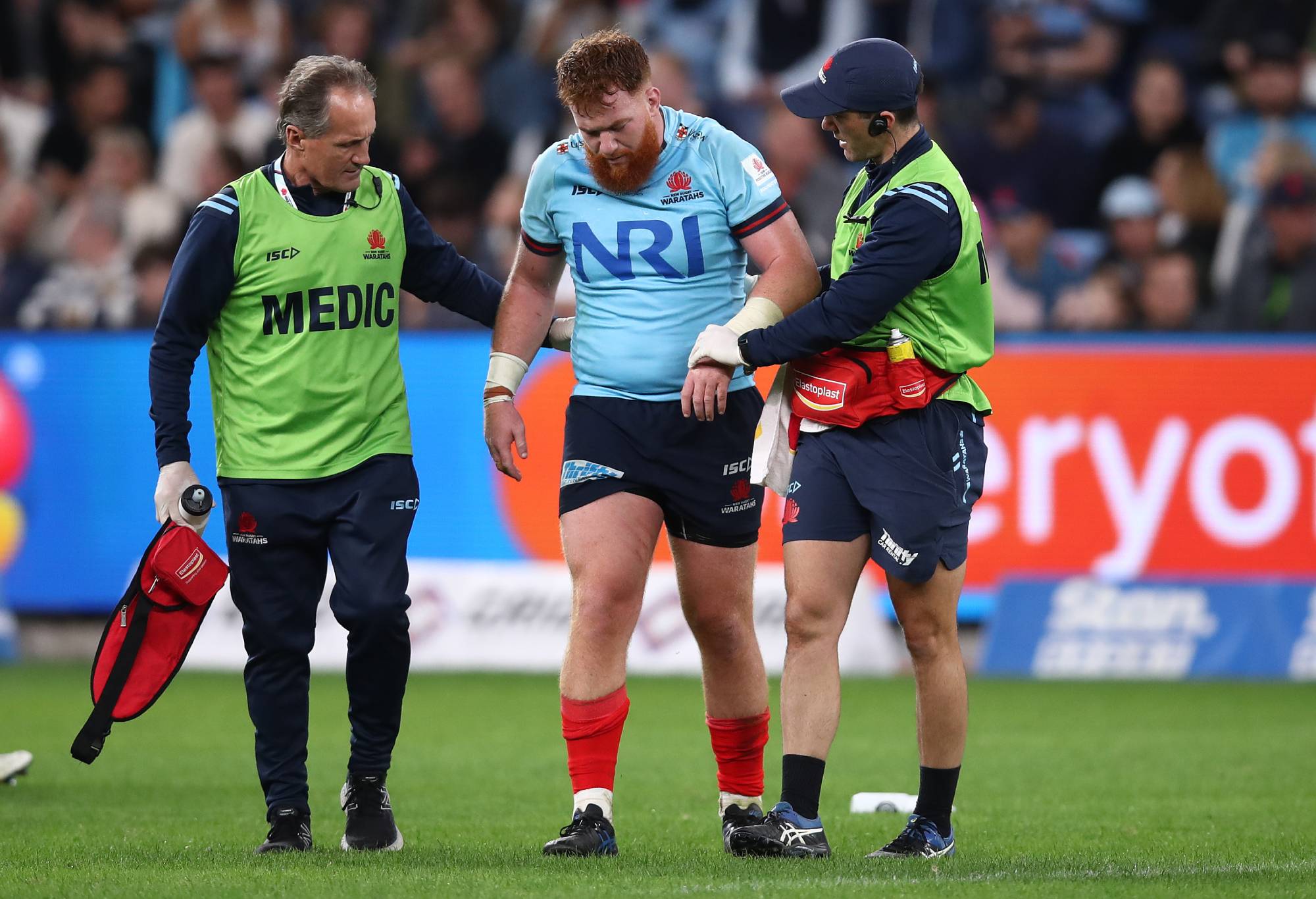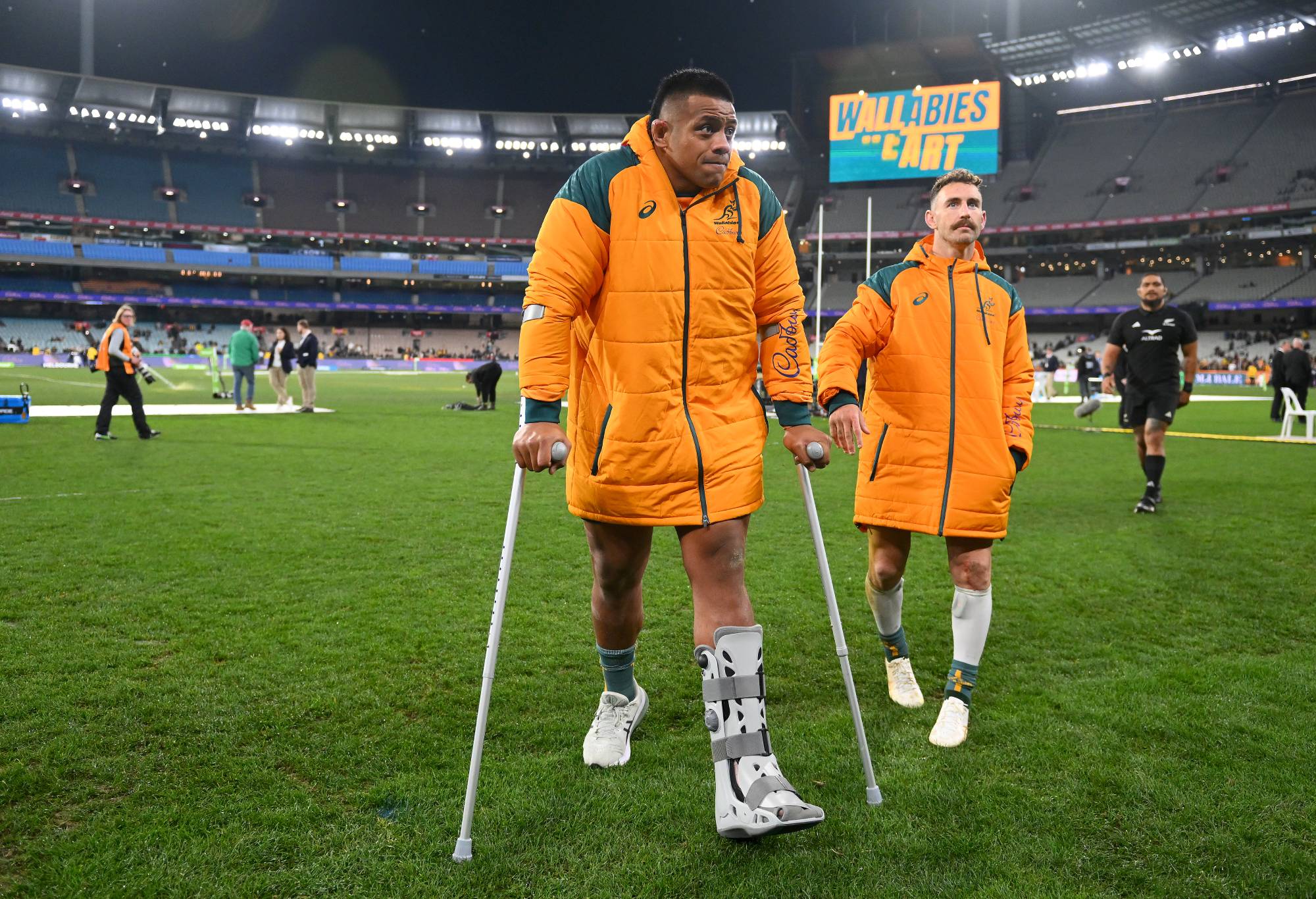Hoops books a Plan B ticket to Paris Olympics
While he's under a massive injury cloud, rugby great Michael Hooper will be part of the Olympic sevens scene regardless after being trumpeted among…
In Joseph Heller’s wonderful novel, Catch-22, the title refers to an insoluble logical dilemma that faces the hero Yossarian in his efforts to avoid being killed in World War 2.
Catch-22 is as follows: the only way to be allowed to leave the Army is to convince the authorities that you are insane. However, if you want to leave the Army, that proves that you are sane, and therefore cannot leave the Army. Only an insane man can leave, but only a sane man would want to, and so you can’t leave, ever.
A fiendish form of Catch-22 affects all professional sporting organisations, and rugby is more prone to it than many due to its especially heavy physical demands.
In a nutshell, it is this: to maximise the potential of a rugby team, one must have the team’s best players on the field. Which means keeping those players fit. But the only way to guarantee players’ fitness is to keep them off the field. And so, to win games of rugby, it is necessary to subject players to the one thing that is most likely to prevent them from winning games of rugby: playing.
Injury is a big problem right now for many teams, and no team more than the Waratahs. Now, you can say that the Waratahs are suffering more than most from injuries because their playing roster is weaker than most to begin with, and there’s something in that – missing good players hurts more the fewer good players you have. But even the best teams might find it’s a spanner in the works to have eleven – ELEVEN – front-rowers on the sidelines. As the NSW coaches travel the state sticking their heads in to every pub to see if there’s anyone propping up the bar who’s free on the weekend, we’re coming dangerously close to one of my previous columns coming to terrifying fruition (yes, I can play front row too: I like a challenge).

(Photo by Jason McCawley/Getty Images)
The Waratahs are obviously not the only team suffering. Attrition is hitting teams throughout Super Rugby, left right and centre, and fans breathe a sigh of relief every time their team gets through a game without any long-term injuries – in fact, just having the long-term injuries strike players we consider less vital to the team’s success is enough to raise a smile. Because avoiding injuries altogether can seem an impossible task.
That’s not surprising: if you look at the game of rugby from first principles, it seems at least as likely that it was invented as an efficient way of injuring young men as a type of recreation. Everything about it is designed to subject joints, muscles, bones, ligaments and tendons to impacts and stresses beyond reason. It’s a miracle any experienced player can walk.
All this means that success in rugby is at least partly influenced by how healthy you can keep your team. Teams themselves don’t like to stress that too much: coaches are usually intent on refusing to blame injuries for losses, and that’s fair enough, because a coach’s job is to prepare the team they’ve got as best they can. You don’t do that by either telling the players that they’ve got a ready-made excuse for failure, or by telling them that you believe they are obviously inferior to the players you’d rather have on the field.
But we’re not coaches, so we can be honest: obviously injuries make a difference to a team’s performance, and yes, sometimes they totally are an excuse for losing. You can’t possibly say that a strong scrum is necessary for rugby success while also saying that a team that doesn’t have any of its first, second or third-choice front rows available has no excuse for being dominated by a team with all its first-choice forwards fit. It doesn’t make sense.
Would the Wallabies have had a better winning percentage under Dave Rennie if it hadn’t been for all the injuries to top-level players during his tenure? Maybe or maybe not, but it makes no sense to say that they wouldn’t have been better placed to do so: if losing players to injury doesn’t affect how the team performs, then it doesn’t matter who you pick in the first place. Rugby fans like to criticise coaches for what they see as terrible selections, but if selection matters, it follows that what players you have available to select matters too.

Allan Alaalatoa. (Photo by Morgan Hancock/Getty Images)
I think we all accept this, of course – it’s just worth reiterating every now and then that the “no excuses” mantra that professional sportspeople tend to adopt in public is no reason for us, the humble fans, to abandon reason. We know full well that teams with lots of injuries should not be blamed for losing as much as teams without lots of injuries, and that having a fit and healthy squad is a massive advantage to any team.
Of course, injury is not necessarily one hundred percent a matter of luck. Every professional team has strength and conditioning staff working full-time with its players, and good conditioning practices can make injuries less likely while bad practices make them more likely. But let’s be honest: while sometimes a rash of injuries can indicate something wrong with preparation, particularly if soft-tissue injuries predominate, the ability to prevent injuries is a very limited one. You can’t train a player to have an invulnerable tibia or un-dislocatable shoulders. And while there are matters of technique that every player is taught to protect themselves on the field, in the end rucking and mauling, scrummaging and just generally running into other huge humans can’t be done without exposing your body to things that your body, if it were given a choice, might really prefer not to be exposed to.
All of this means is that what happens in Super Rugby, or Test rugby, or suburban rugby, or high school rugby, or whatever form of head-down-bum-up-let’s-run-full-pelt-into-that-guy-over-there you fancy, is influenced to a significant degree by luck. It’s not the only factor, but it’s there, and it matters. If you’re unlucky with injuries, it can reduce your chances – get unlucky enough and they’ll go down to zero. Every team has a threshold at which the weight of an injury toll will prove too much. Blessed are teams for whom that threshold is high, but it will still exist. I don’t think there are many teams who’d have performed as well as they have this year if they’d had the Waratahs’ hideous front-row casualty ward – some might’ve been good enough to overcome it in the long run, but none of them could shrug it off without consequence.
When trophies are handed out, of course, none of this matters. The record books note winners and losers, not those who could’ve been winners without three busted ankles and an AC joint at a bad time. It’s a cruel, cruel world, and in the midst of celebrations luck is rarely mentioned. As the saying goes, winners are grinners and losers can take another ibuprofen. But when it comes to assessing the performance of rugby teams – assessments that often make or break someone’s career – ignoring the role that the fickle wheel of walking wounded has played is neither kind nor logical.
Put bluntly, players are going to get hurt, and there’s no way to actually stop that. Knees will buckle, shoulders will be wrenched, bones will break, heads will be knocked, and even with total perfection in the back rooms, hamstrings will tear. If you’re running a rugby team, every time you send a player out onto the field, you’re exposing him to the possibility of a serious injury that could be a hammer blow to your team. The only way to avoid that possibility is to not send him out, which would be a compassionate demonstration of your concern for your player’s health, but in purely rugby terms, keeping a player fit to play by preventing him from playing could be counterproductive at best.
As Yossarian said, and as every rugby coach knows with grim certainty: that Catch-22, it’s a hell of a catch.